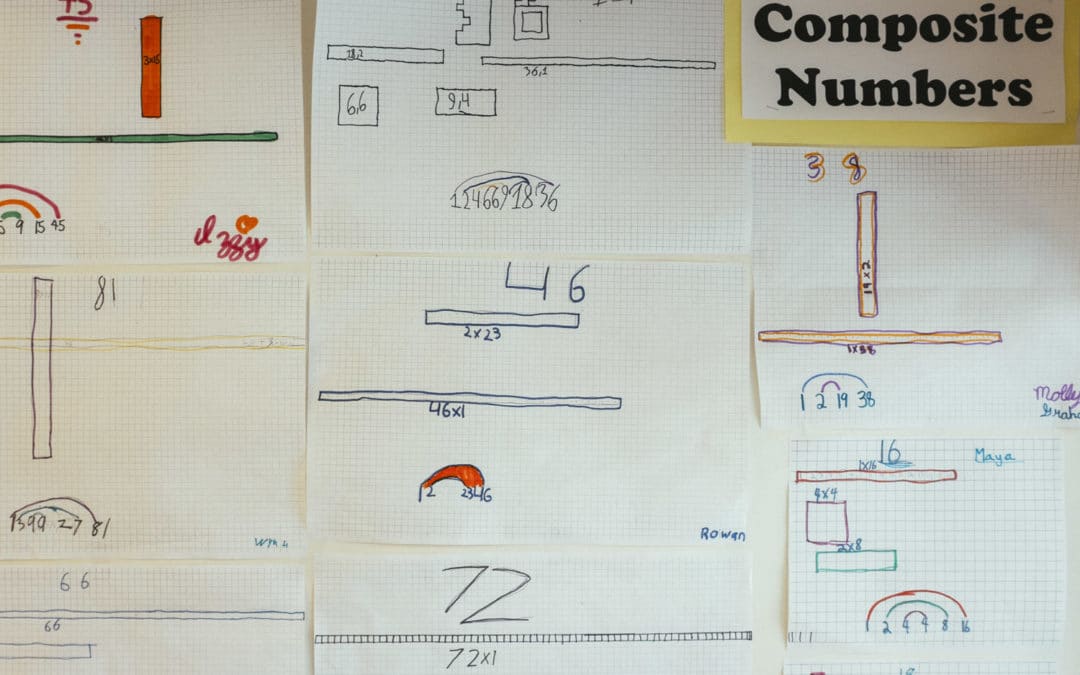By Sima Misra, Director of Teaching & Learning
As K-8 Director of Teaching & Learning, I am grateful to focus my efforts on ensuring that student learning is always at the center at The Berkeley School, and that teachers and students have the curricula, resources, motivation, and skills to support that learning. My background as a PhD Molecular Biologist explains part of my passion for math and science education, and why Math Night is my favorite evening of the year. I wanted to provide you with some behind the scenes understanding of the math teaching and learning families experienced at Math Night earlier this month.
What is Math?
I love this short video, because it captures the richness and power of mathematics.
Our goal is to open up students to appreciate the beauty of math, while giving them the skills and conceptual understanding to use it in flexible ways.
Early Childhood
Our school’s early childhood and elementary math program evolved from Montessori roots, which you can still see today, particularly at the ECC. The beautiful Montessori materials help make abstract concepts concrete, build a sense of order and attention to detail, and provide geometrical and numerical ways of looking at mathematical concepts. Students continue to learn math using Montessori and other materials, building their understanding of number sense, geometry, and sequence by counting, building, and comparing. As students mature, they use materials to add, subtract, multiply, and divide; learn to recognize and read numbers through 1000; skip count; and even compare odd and even numbers.
Elementary
Last year we switched to the Bridges Mathematics (2nd edition) curriculum, which dovetails nicely with Contexts for Learning Mathematics units we have taught for the past few years, providing rich problems with low entry points for all students and high ceilings for those who need more challenge.
In the Bridges program, mathematical routines are practiced during Bridges Number Corner, an engaging calendar activity, and during explicit instruction, games and activities, including pattern recognition and prediction; number skills, geometric shapes, money, and time; and Problem Strings, a set of problems which are woven together conceptually to help students identify strategies. The students are encouraged to share and internalize strategies, use them flexibly, and choose strategies that will be efficient. Articulating their thinking allows them to solidify their learning, apply their approaches to more complex problems, and make meaning together. Enjoyable games encourage practice and build fluency and skills.
This year all of our 1st-5th grade students have subscriptions to DreamBox, an online personalized learning tool which meshes well with the Bridges curriculum, and which students can use both at school and at home. Teachers can quickly gauge students skills and understanding, assign lessons, and measure growth. We have already noted increased growth in students who use the tool regularly. In addition, our Learning specialists Katherine Campbell in K-3rd offer students support by pushing into math classrooms and providing intervention outside of class where necessary.
Middle School
Last year, Middle School math teacher Kim Huie led a task force to seek out the best research-based math curricula with NCTM standards, engaging floor to ceiling problems, alignment with the elementary math program, and strong preparation for a wide variety of traditional and more progressive high school math programs. After a very successful pilot last spring, the faculty chose Illustrative Mathematics, which we rolled out in the 6th and 7th grades this fall. Kim will pilot this program in the 8th grade this year, in addition to the standard Elementary Algebra textbook we have used for many years.
Supporting Your Math Student
Research shows that one of the most important things you can do as a parenting adult is to develop a growth mindset about your own math abilities and your child’s. Every person can learn math, and there is no such thing as a “math person,” just people who have more experience learning math. There are many helpful resources at Youcubed.org, and support for elementary families at the Bridges 2nd Edition Family Support site. If your teacher suggests that your student needs more practice with math, support your student in using DreamBox; you might also consider purchasing apps from companies like Dragonbox or Brainquake. Students in older grades may be pointed to individualized practice by their teachers at sites like Khan Academy. And if you have concerns or questions, please talk to your child’s teacher, as they are the true experts in your student’s learning.

